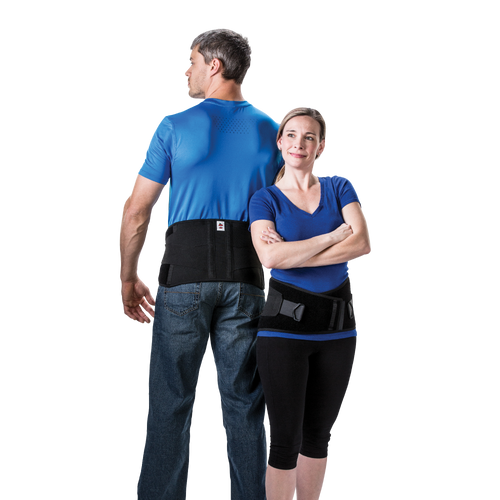

How to Reduce the Risk of Back Injury in a Physically Demanding Job
By Brian Acton
Millions of workplace injuries occur every year, putting the injured out of commission and costing both employer and employee time and money. To reduce the risk of workplace injury, most employers have safety guidelines and standards that their workers must follow. However, there’s no foolproof solution to prevent workplace injury, and when human error is a factor, employers can never provide a full guarantee that you won’t be injured at the workplace. Physically demanding jobs – such as construction worker, repairman, and grocery stocker – have a higher risk of injury, as the act of performing the job itself can cause injury if not performed properly. If you have a job that requires routine, demanding physical activity, working smarter in a way that reduces that risk is essential to keeping you safe on the job. Lower back injuries as a result of handling materials (lifting boxes, moving supplies, etc.) are one of the most common causes of workplace injury.
Here are some best practices to keep your lower back safe as you lift and move supplies throughout the day:
Make Your Workspace Back-Friendly Your workspace should be optimized for safety and functionality. You probably already use many commonsense safety practices, such as keeping objects off the floor where they could be a tripping hazard, unplugging tools that aren’t in use, etc. However, other policies can be enacted to make work easier on your back. For instance, if you are consistently lifting boxes from shelves, you should raise or lower those shelves to an ideal height that eliminates the need for bending or lifting boxes from the ground to reduce the strain you put on your back. Avoid storing heavy products deep in the back of shelves, where you will have to reach far to pull them out. If you move through an assembly line process when building a product, organizing your workspace so that you can move from step to step without too much manual lifting will also reduce injury risk. Identifying areas like these – where you can make clear environmental choices to reduce strain on the back – can help prevent back injuries.
Lift Smart There are a number of ways you can lift boxes and supplies strategically to reduce the risk of back pain: The buddy system: If you have someone you can use as a lifting partner, you’re essentially splitting your lift in half. Use tools: Do you have access to a forklift? What about a wheelbarrow, dolly, or handcart? Anytime you can put heavy objects on wheels, you’re relieving your body from the strain of lifting those objects. Body position: When you must lift and carry an object using only your body, start with a wide stance, tightening your core. Focus on crouching with a bend in your knees, instead of bending straight at the hips. Keep your shoulders back rather than rounding them and hunching over. When you’re ready to lift, put the load on your legs, not your back, and lift the object close to your body. If it’s difficult for you to maintain good lifting posture, products such as lumbar support belts promote proper lifting technique and reduce the risk of injury. Before intense activity, make sure you warm up – a brisk jog or some stretches will help you prepare. Take breaks as needed and whenever possible, and be sure to hydrate frequently!
Management and Staff Cooperation Both management and staff should have an equal interest in preventing workplace injury. Management is responsible for providing and promoting a safe workplace, but workers should be responsible for adhering to guidelines and even improving upon existing practices. Management should establish safety guidelines that take into account the risk of lower back injury, and optimize processes and procedures that reduce this risk. They should also provide safety training that specifically focuses on injury prevention to workers. Workers have a responsibility to work safely, but also to provide feedback or suggest improvements for better safety procedures. Finally, an injured worker must immediately report their injury to their employer in keeping with that employer’s safety guidelines.
Conclusion Using these tips and policies, you can help prevent yourself and others in your workplace from being injured. Whether you work alone in your own workshop, or in a warehouse with hundreds of other workers, the fundamentals of safety are the same. Optimizing the workplace, lifting using best practices, and workplace cooperation can all help fight workplace injury and keep our backs safe and healthy.
Sources: https://www.ccohs.ca/oshanswers/ergonomics/inj_prev.html https://www.osha.gov/SLTC/ergonomics/
Mentioned Products


